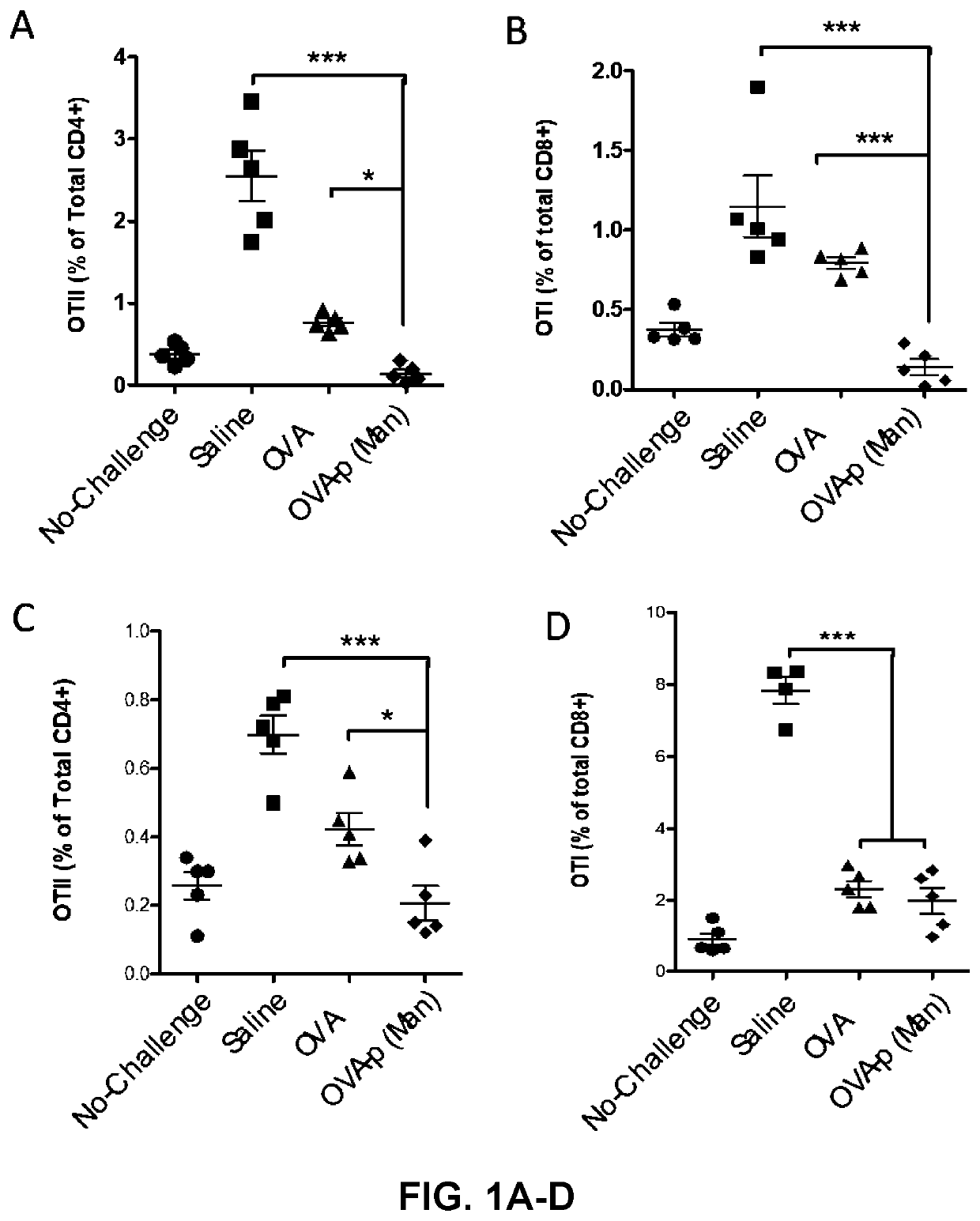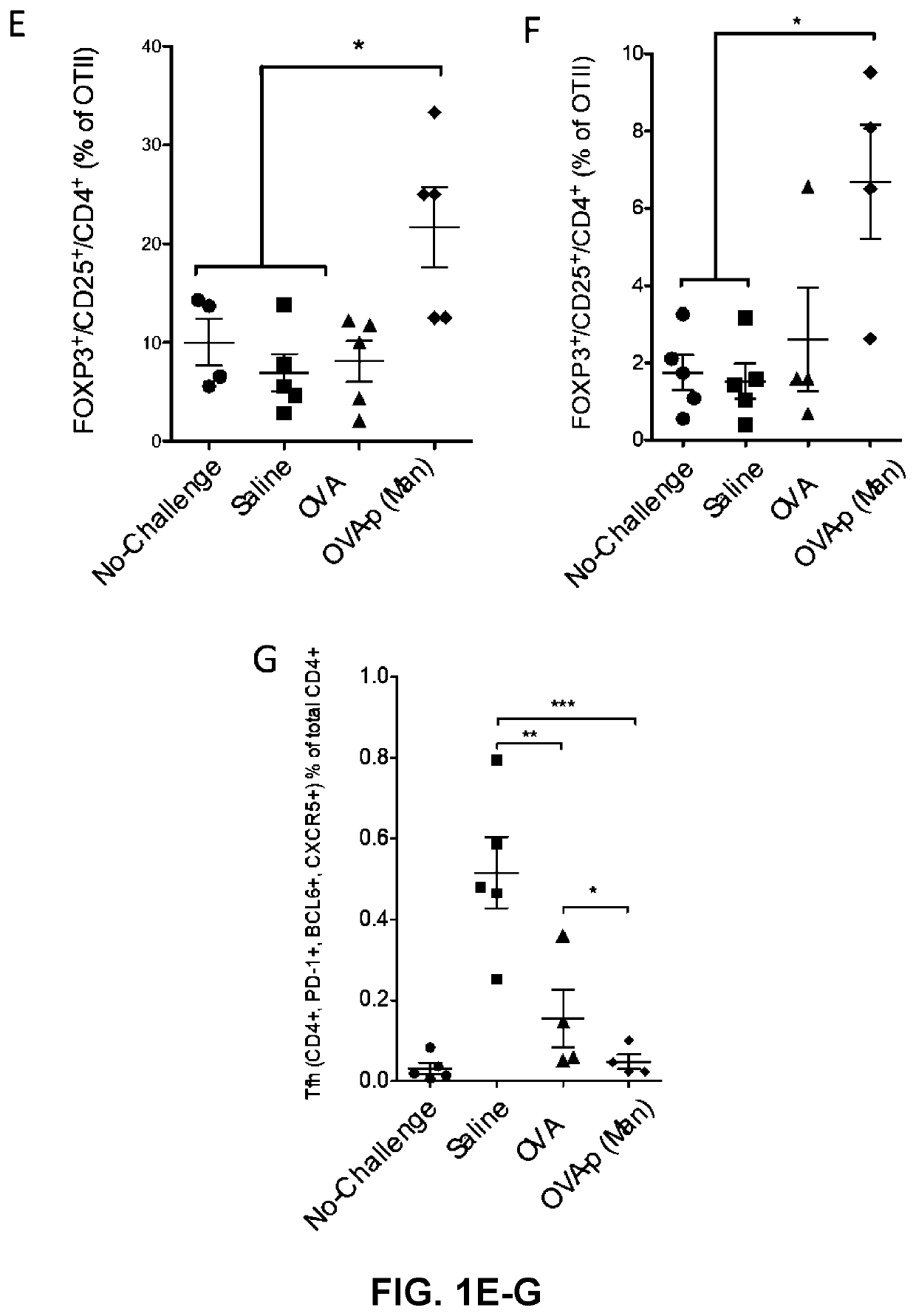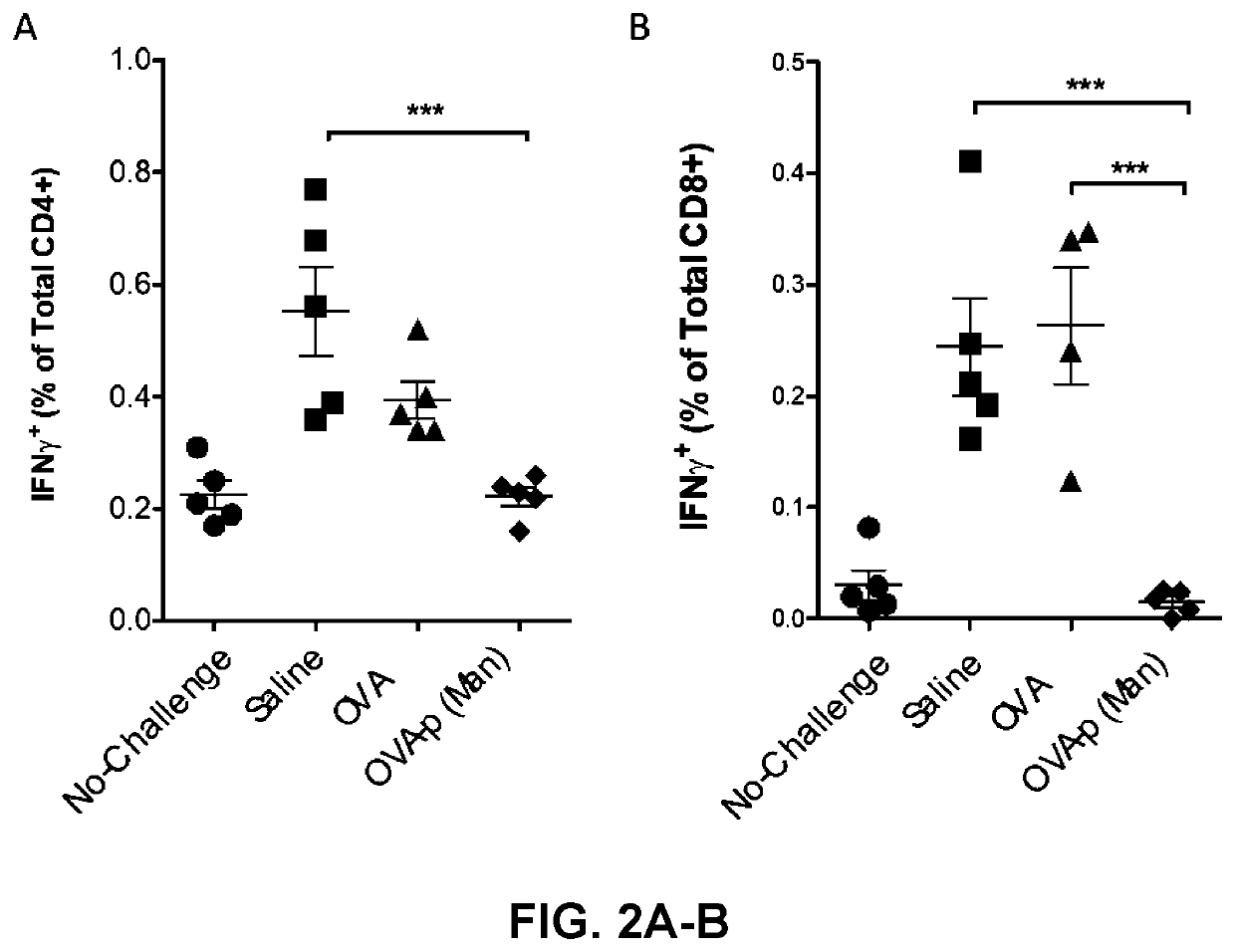Compositions and methods concerning immune tolerance
a technology of immune tolerance and composition, applied in the field of immunology, can solve the problems of unwanted reaction of the immune system and inefficient new approach to treating a disease, and achieve the effect of facilitating modification
- Summary
- Abstract
- Description
- Claims
- Application Information
AI Technical Summary
Benefits of technology
Problems solved by technology
Method used
Image
Examples
example 1
Polymer and Conjugate Synthesis
[0233]All reactions were carried out at room temperature unless specified. Unless otherwise stated, chemicals were reagent grade and purchased from Sigma-Aldrich (Saint Louis, Mo., USA). Size exclusion chromatography was carried out on an ÄKTA protein purification system (General Electric Healthcare Lifesciences), using a Superdex 200 10 / 300 column (General Electric Healthcare Lifesciences). All NMR spectra were collected on a Bruker Avance-II 400 MHz NMR, unless otherwise noted, and NMR spectra were analyzed with MnovaNMR (Mestrelab). High pressure size exclusion chromatography was performed on a Dionex Ultimate 3000 UHPLC (Thermo Fisher Scientific). Gels were imaged using a Biorad Universal Hood Gel Doc 2000 System (Biorad). Antigens conjugated to polymers as disclosed in the Examples are non-limiting examples of tolerogenic antigens according to embodiments disclosed herein, including embodiments using immunogenic fragments of antigens.
Compound 1: 1...
example 2
OTI / OTII Challenge to Tolerance Model
[0247]BLK6 mice were treated with saline, or 10 μg of OVA (as a non-limiting example of an immunogenic antigen) in the form of free OVA or OVA conjugated to p(Man) (OVA-p(Man)) one day and 7 days after an adoptive transfer of 7.0×105 OTI and OTII T cells. These mice were challenged with an intradermal injection of LPS and OVA 14 days after the initial OTI and OTII T cell transfer and then the immune response in the draining lymph nodes (dLNs) was assessed on day 19 and compared to mice that were treated with saline, but did not receive the challenge of LPS and OVA (No-challenge).
[0248]Profound tolerance was induced in the CD4+ T cell compartment, as shown in FIGS. 1-2. In terms of total cell frequencies, both dosing regimens of both OVA-p(Man) resulted in equivalent low levels of OTII cells after challenge, statistically lower than by treatment of OVA (* indicates p<0.05, ** indicates p<0.01), as shown in FIG. 1. When the cells that remained were...
example 3
Tolerance Induction to Intravenously Administered Asparaginase
[0250]Five BALB / c mice per group were injected with 2.5 μg of asparaginase (as a non-limiting example of an immunogenic antigen) formulated as free asparaginase (ASNase) or conjugated to p(Man) (ASNase-p(Man)) once a week for 3 weeks and then, at week 4, were switched to 15 μg of ASNase i.v. once a week for 8 weeks. During the initial 3 weeks ASNase-p(Man) was administered via either i.v. or subcutaneous injection. Sera was taken from the mice and monitored weekly for the presence of αASNase.
[0251]Upon intravenous injection of ASNase at week 4, animals treated with saline and subcutaneously administered ASNase-p(Man) experienced a rapid increase in serum αASNase IgG (FIG. 3), animals treated with i.v. administered ASNase-p(Man) did not incur an increase in serum αASNase IgG for the duration of the experiment. Furthermore, after 38 days of treatment, animals treated with ASNase-p(Man) via intravenous infusion, experienced ...
PUM
| Property | Measurement | Unit |
|---|---|---|
| molecular weight | aaaaa | aaaaa |
| area | aaaaa | aaaaa |
| composition | aaaaa | aaaaa |
Abstract
Description
Claims
Application Information
 Login to View More
Login to View More - R&D
- Intellectual Property
- Life Sciences
- Materials
- Tech Scout
- Unparalleled Data Quality
- Higher Quality Content
- 60% Fewer Hallucinations
Browse by: Latest US Patents, China's latest patents, Technical Efficacy Thesaurus, Application Domain, Technology Topic, Popular Technical Reports.
© 2025 PatSnap. All rights reserved.Legal|Privacy policy|Modern Slavery Act Transparency Statement|Sitemap|About US| Contact US: help@patsnap.com



